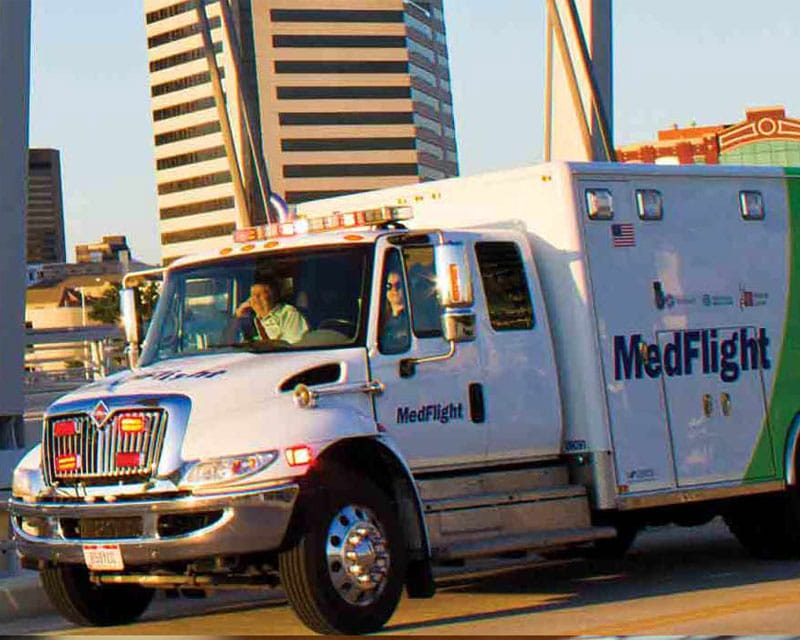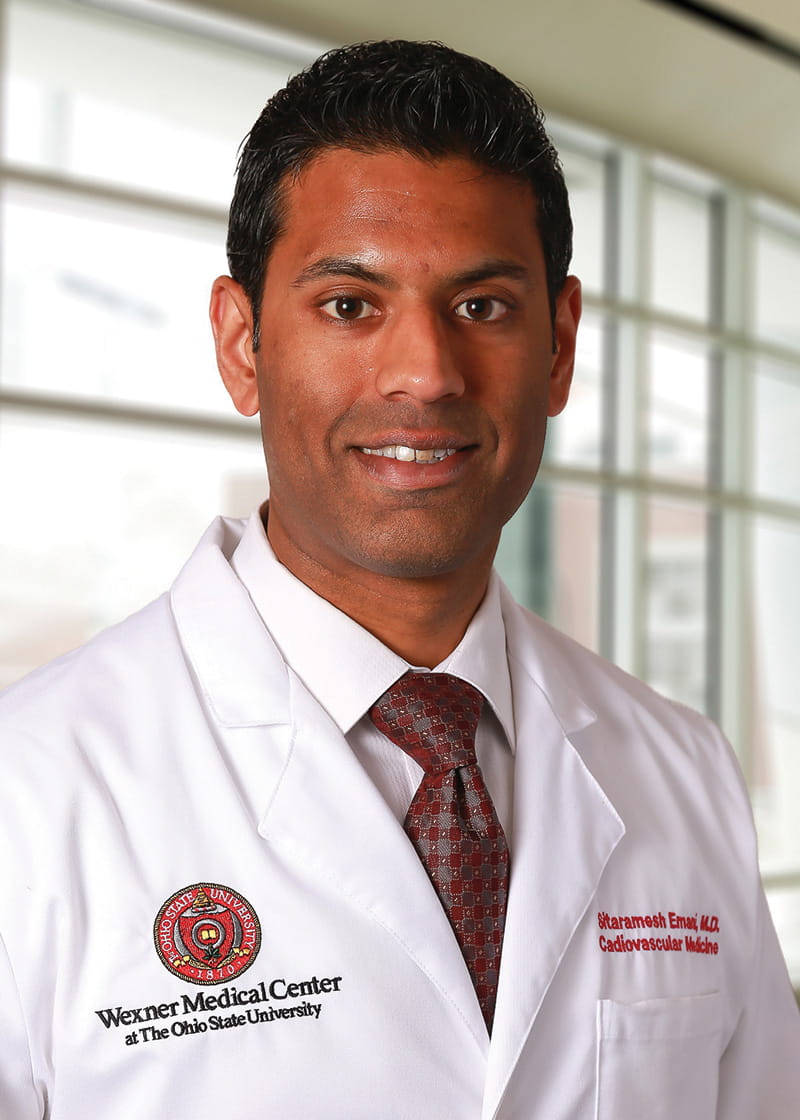
Safer Patient Transport
 A new, multidisciplinary response team at The Ohio State University Richard M. Ross Heart Hospital is using standardized decision-making algorithms to improve outcomes for patients with cardiogenic shock.
A new, multidisciplinary response team at The Ohio State University Richard M. Ross Heart Hospital is using standardized decision-making algorithms to improve outcomes for patients with cardiogenic shock.
In addition to promptly identifying the most appropriate treatment for each patient at the time of diagnosis, team members can better anticipate changes in clinical status and quickly escalate therapeutic strategies. This gives patients with inadequate perfusion timely access to potentially lifesaving care, including the latest mechanical circulatory support devices.
Despite dramatic advances in cardiovascular treatments, national mortality rates among cardiogenic shock patients continue to exceed 50%.
“Even though there are more tools than ever before to treat cardiac disease, the medical community still struggles to increase survival rates among patients with cardiogenic shock,” says cardiologist Sitaramesh Emani, MD, associate professor of internal medicine and director of heart failure clinical trials at Ohio State’s Heart and Vascular Center. “At Ross Heart Hospital, around 200 inpatients per year deteriorate to cardiogenic shock, which complicates our ability to treat them.”
Dr. Emani, who helped spearhead the development of the cardiogenic shock program, says he and his colleagues realized the most innovative tools were not going to impact outcomes without a plan to utilize those tools appropriately.
“There isn’t a one-size-fits-all approach to treating cardiogenic shock, nor is there much evidence to help us match the right treatments to the right patients,” explains Dr. Emani, who is an associate professor – clinical at the College of Medicine. “The missing piece seemed to be aligning the different levels of expertise within our hospital to create a coordinated and cooperative environment in which to treat these patients.”
Ohio State’s cardiogenic shock team includes specialists in cardiology, cardiac surgery, heart failure, interventional radiology and critical care. If a provider suspects their patient has developed cardiogenic shock, they can activate the on-call response team. Members use approved diagnostic and treatment protocols to quickly evaluate the patient and reach consensus on the most appropriate treatment.
“By pooling our expertise and using consistent protocols that reduce variation, we’ve improved care for some of our sickest patients,” says Dr. Emani. “When people have cardiogenic shock, their condition can change rapidly and without warning, even during treatment. Having a multidisciplinary team involved at every step of their care plan means we’re always ready to implement adaptable therapies if their condition suddenly worsens.”
The 150-bed Ross Heart Hospital opened in 2004 as the nation's first academic hospital dedicated to cardiovascular care. Today it continues to offer some of the region’s most advanced therapies, including devices that help a damaged heart pump blood.
“At Ohio State, we can care for cardiogenic shock patients with medical and surgical therapies such as extracorporeal life support, ventricular assist devices including the Total Artificial Heart®, and heart transplant,” adds Dr. Emani. “Many of these services are critical to survival, yet they’re not available at every hospital.”
Dr. Emani says he and his colleagues will continue to refine protocols, track outcomes and study the efficacy of novel treatments for cardiogenic shock as they become available. They also aim to improve care throughout the region by creating a network of smaller, outlying hospitals.
“We plan to make our response team available to referring providers who need a virtual consultation,” says Dr. Emani. “Not only can we help our partners implement their own protocols for diagnosing and treating cardiogenic shock, we can also facilitate transfers for patients who need the expertise and resources that are only available at tertiary care centers.”
Dr. Emani notes that in the last couple years, organizations such as the American Heart Association have advocated for the creation of integrated, regionalized systems of care to lower cardiogenic shock morbidity and mortality — a practice that is already associated with increased survival among patients with stroke, ST-elevation myocardial infarction or other time-sensitive, critical conditions.
Read more featured stories about The Ohio State University Heart and Vascular Center.

Safer Patient Transport

New treatment for atrial fibrillation

First US Medical Center in Clinical Trial